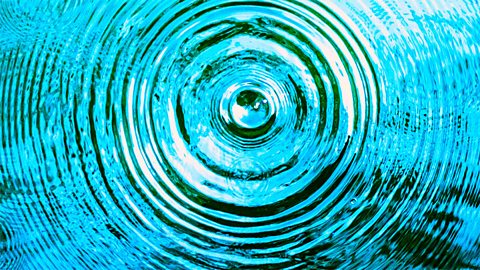Key points
- Light travels as a transverse waveA wave in which the particles move up and down at right angles to the direction it travels in, like an ocean wave or lifting a rope up and down. and can be reflected by surfaces and objects.
- Smooth, shiny surfaces produce specular reflectionThe type of reflection caused by smooth, shiny surfaces. Specular reflection causes parallel light rays to all be reflected in the same direction., and rough surfaces produce diffuse reflectionThe type of reflection caused by rough surfaces, which causes light rays to be reflected in all directions..
- ray diagramA diagram showing the path light takes. Rays of light are represented using straight lines, with arrowheads to show the direction of travel. are used to show the path of light rays which are reflected and how images are formed in a mirror.
Reflection and ray diagrams
When light hits a mirror, it reflectWhen something bounces off a surface, like light waves bouncing back or reflecting from a mirror. from the surface of the mirror.
The angle at which the light is reflected depends on the angle it hits the mirror, and a ray diagram can be used to show the path of the light rays.
The diagram below shows the path of a light ray being reflected from a plane mirrorA flat mirror which can produce clear, undistorted images..
- The reflective surface of the mirror is represented by a vertical line, with hatching ( \ \ \ \ \ ) to show the reverse (non-reflective) side of the mirror.
- The ray of light travelling towards the mirror is called the incident rayThe light ray travelling towards the mirror or surface..
- The ray of light which is travelling away from the mirror is called the reflected rayThe light ray travelling away from the mirror or surface..
- The dashed line is called the normal, and is drawn at 90┬░ to the surface of the mirror. All angles are measured from the normalA line at 90┬░ to the reflecting surface, from which all angles are measured - usually represented by a dashed line..
- The angle of incidence, i, is the angle between the normal and incident ray.
- The angle of reflection, r, is the angle between the normal and reflected ray.
The law of reflection
The angle the ray is reflected is always the same as the angle the light hits the mirror, with both angles being measured from the normal.
This is summarised by the law of reflection, which states: ÔÇ£the angle of reflection is equal to the angle of incidenceÔÇØ, or simply ÔÇ£i=rÔÇØ.
This law works for any angle. For example:
Diffuse and specular reflection
If parallel rays of light hit the surface of a plane mirror, they are all reflected in the same direction. This is known as specular reflection. Because all the light reflects in a predictable way, images can be formed by specular reflections.
If light meets a rough surface, the rays of light reflect in different directions.
Each ray obeys the law of reflectionThe law of reflection states that the angle of reflection is equal to the angle of incidence or i=r. but, because the different parts of the rough surface point in different directions, the light is not all reflected in one direction. Instead, the light is reflected in all directions ÔÇô this is called diffuse reflection or scattering.
This is why you can see a clear image of yourself in a shiny flat mirror, but not in a dull rough wall.
How do computer games use ray tracing?
Modern computer games use ray tracing, applying the law of reflection to rays of light to create realistic reflections ÔÇô improving the quality of the computer game graphics.
Image formation in mirrors
When light reflects from a plane mirror, it produces a clear image. This image:
- appears to be behind the mirror
- is the right way up
- is ÔÇÿlaterally invertedÔÇÖ (letters and words look as if they have been written backwards)
A ray diagram can be used to show how an image in a mirror forms:
Notice that the ÔÇÿrealÔÇÖ rays, the ones leaving the object and the mirror, are shown as solid lines.
The ÔÇÿvirtualÔÇÖ rays, the ones that appear to come from the image behind the mirror, are shown as dashed lines ( - - - - - - ). Remember that each incident ray will obey the law of reflectionThe law of reflection states that the angle of reflection is equal to the angle of incidence or i=r..
To draw a ray diagram showing reflection:
- Draw two rays from the object to the mirror. Each ray should obey the law of reflection.
- Trace the rays back using dashed lines, until they meet.
- The image will appear to be at the position these dashed lines meet.
Test your knowledge
Play the Atomic Labs game! gamePlay the Atomic Labs game!
Try out practical experiments in this KS3 science game.

More on Waves
Find out more by working through a topic
- count5 of 15

- count6 of 15

- count7 of 15

- count8 of 15
